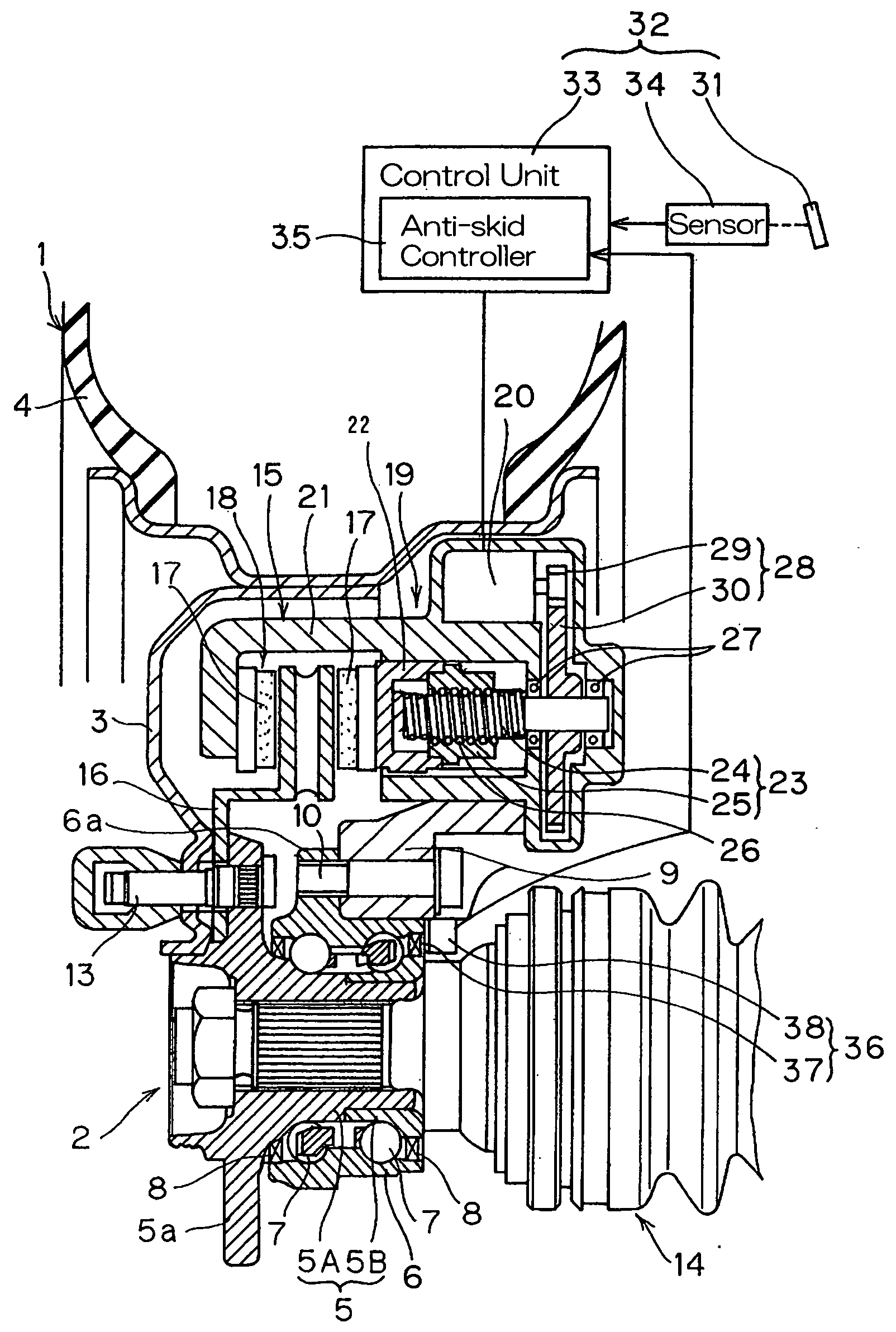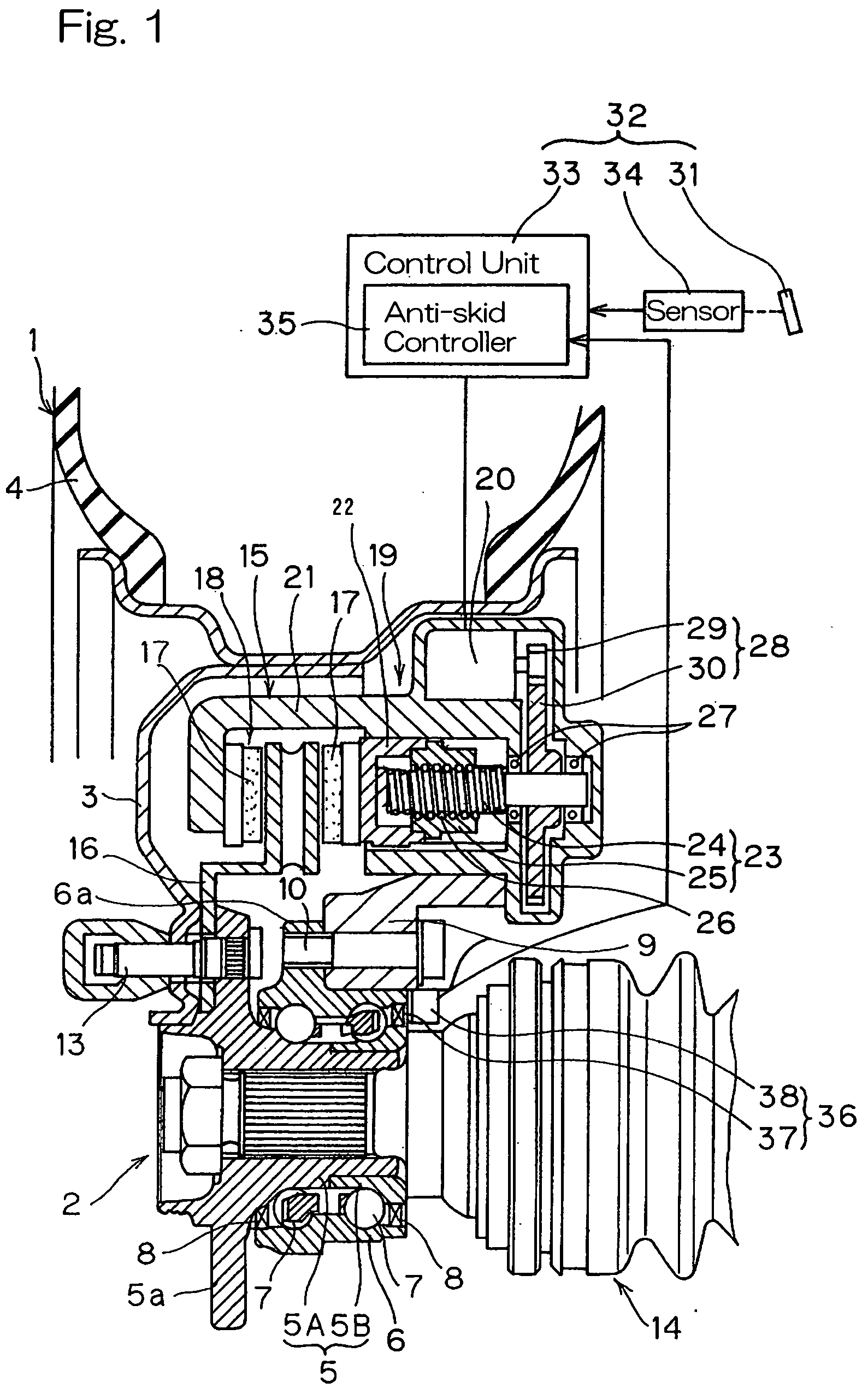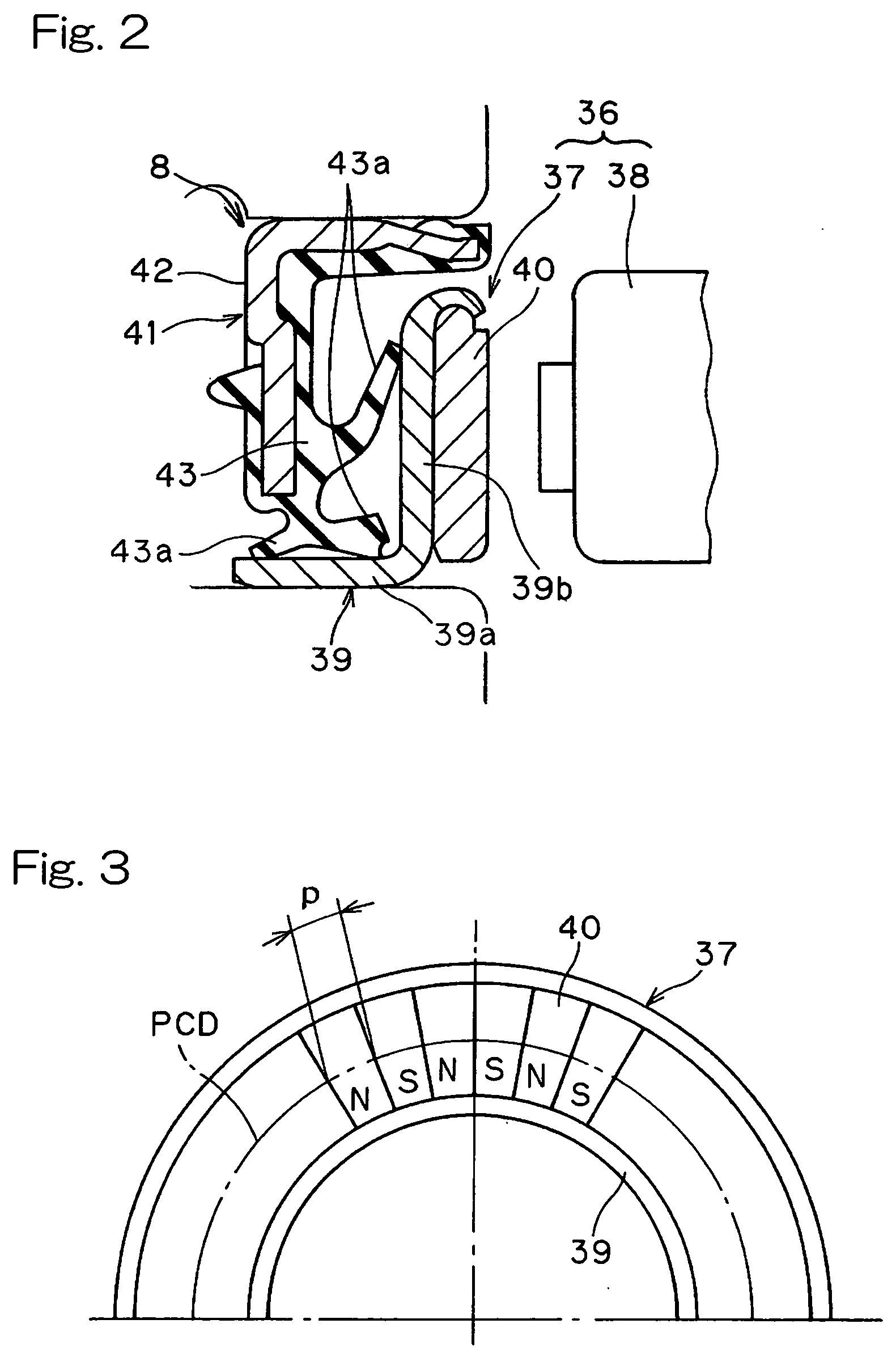[0012] In order to accomplish these objects of the present invention, the electrically powered brake system herein disclosed includes a brake wheel mounted on a vehicle wheel for rotation together therewith; an actuating unit including brake pieces frictionally engageable with the brake wheel; a drive unit for translating a rotary output of an electric drive motor into a rectilinear
reciprocating motion by means of a
ball screw mechanism, which rectilinear reciprocating motion is transmitted to the brake pieces as a braking force; an operating unit for controlling the electric drive motor according to manipulation of an operating member; a rotation
detector including a magnetic
encoder and a sensor, the magnetic
encoder being mounted on a rotating side member of a wheel support bearing
assembly for supporting the vehicle wheel and having a plurality of opposite
magnetic poles alternating in a direction circumferentially thereof, the sensor being mounted in face-to-face relation with the magnetic encoder for detecting passage of the opposite
magnetic poles; an anti-skid controller for regulating the braking force, exerted by the electric drive motor, in dependence on the number of revolutions of the vehicle wheel detected by the rotation detector during a braking effected by manipulation of the operating member, to thereby prevent rotation of the vehicle wheel from being locked.
[0013] According to the present invention, when the operating member is operated to effect a braking, the electric drive motor can be driven under the control of the operating unit and rotation of the electric drive motor is then translated through the
ball screw mechanism into a rectilinear reciprocating motion that is assumed by the brake pieces with the brake wheel consequently clamped by the brake pieces, thereby achieving the braking. At this time, the anti-skid controller regulates the braking force, exerted by the electric drive motor, in dependence on the number of revolutions of the vehicle wheel 1 to thereby prevent the rotation of the vehicle wheel 1 from being locked. Thus, the provision of the anti-skid controller in the electrically powered brake system is effective in that the braking force can be regulated with a high response to the detection of rotation of the vehicle wheel, allowing an accurate braking to be carried out. Also, the use of the electric drive motor as a source of drive is effective to substantially eliminate the need to use any hydraulic equipments and hydraulic
pipe lines and, therefore, the structure around the vehicle wheel can advantageously be simplified.
[0014] Also, since as a mechanism for converting the rotary motion of the
electric motor into the rectilinear reciprocating motion the ball screw mechanism, also known as the ball-and-nut mechanism, is employed, the output from the electric drive motor can be highly efficiently transmitted and the rectilinear motion can be a
short distance motion relative to the rotary motion, resulting in that the relatively high braking force for a small output of the
electric motor can be obtained. Yet, since the rotation detector for detecting the rotational speed of the vehicle wheel makes use of the magnetic encoder capable of producing a
magnetic field as an element to be detected, it is in the form of an active detector having an excellent sensitivity. For these reasons, in combination with the braking characteristics of the electrically powered brake system having a high response, an accurate braking can be achieved with a further appropriated regulation of the braking force.
[0016] Where the anti-skid controller is utilized to individually and separately control the vehicle wheels, it is possible to make best use of the excellent
response characteristics of the drive unit in which the electric drive motor and the ball screw mechanism are utilized, so that the vehicle wheels tending to exhibit different numbers of revolutions during, for example, the automotive vehicle cornering or running along the tortuous road can be further effectively braked under the properly exercised anti-skid control.
[0018] In this wheel support bearing
assembly according to the present invention, since the rotation detector for detecting the rotational speed of the vehicle wheel makes use of the magnetic encoder capable of producing a
magnetic field as an element to be detected, it is in the form of an active detector having an excellent sensitivity. For this reason, in combination with the braking characteristics of the electrically powered brake system having a high response, an accurate braking can be achieved with a further appropriated regulation of the braking force. Where the magnetic encoder is incorporated in the sealing unit as described above, compactization and reduction in number of component parts used and in number of assembling steps can advantageously be achieved.
[0019] In a preferred embodiment of the present invention, the magnetic encoder employed in the wheel support bearing
assembly may include a ring-shaped core
metal made of a metallic material and forming a part of the sealing unit, and a ring-shaped multi-pole
magnet disposed on a surface of the core
metal. The multi-pole
magnet is preferably a member having a plurality of opposite
magnetic poles N and S magnetized to alternate in a direction circumferentially thereof, in which case the neighboring opposite magnetic poles N and S are preferably spaced at intervals of a predetermined
pitch p that is chosen to be not greater than 1.5 mm, with a single
pitch deviation of .+-.3%. The single
pitch deviation referred to above is represented by the difference in distance between the magnetic poles detected at the position spaced a predetermined distance from the multi-pole
magnet, which is expressed by the ratio relative to a target pitch. With this feature residing in the wheel support bearing assembly, it is possible to achieve the detection of rotation with high precision.
 Login to View More
Login to View More  Login to View More
Login to View More 


